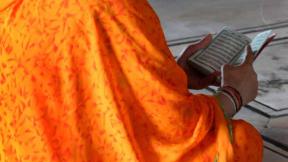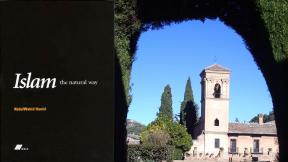
A couple of months ago my niece, about four years old, came home from a friend’s house with a glittery pink tube of Hannah Montana lip gloss. The hit Disney show features a teen-aged girl who lives a secret life as a famous (and much older looking) pop singer. I was understandably appalled. I didn’t think make-up would make its appearance for at least a few more years, and I wasn’t sure a pop diva was the best role model for my little girl. The very idea that lip gloss would be branded by a show on the Disney channel seemed incongruous with my early-90s conception of childhood. I found myself longing for the old days of wholesome cartoon shenanigans and fuzzy purple dinosaurs. Thankfully, my biggest fears weren’t realized. My niece liked the lip gloss mostly because it was strawberry-flavored. I was relieved to see her sweet tooth still out-weighed her fashion sense. I can only hope it stays that way for a long time.
Still, the episode offers a small example of the dichotomy between home life and the wider world. Popular culture--movies, television, the music industry—all of it seems bent on getting kids to act older, to grow up faster. I can understand when parents say they’re worried about their children being exposed to inappropriate influences at younger and younger ages. Being Muslim-American, I’m especially sensitive to the sometimes shocking disparity between the sheltered space we build for our children and the seemingly treacherous society outside. I have no problem with placing limits and setting boundaries. That’s what parents are supposed to do for their kids.
The problem arises when we apply this overly cautious approach to the things our children learn in the classroom. As a graduate student in Creative Writing, I’ve taken English courses for years, and I’ve experienced first-hand the potential difficulty in trying to reconcile traditional Muslim ideals with education in the Humanities. Literature and the Arts fall under easy scrutiny since they—unlike the hard sciences—have a strong cultural grounding. Unfortunately, that prevailing cultural influence isn’t always in line with typical Muslim views. Thinking back to my school days, I remember reading books that featured scenes of adultery, murder, racism, drug use and a slew of other depravities that would make my parents lose sleep.
The question becomes whether it makes sense to censor a child’s curriculum. Concerned parents might ask, “If I wouldn’t allow my son to see a movie with sex or violence, then why would I allow him to read a book with the same themes?” The logic seems sound at first blush, but it overlooks one important difference: these books are being presented in the classroom setting, not simply as frivolous entertainment. Moments of immorality within the text are not focused upon for their own sake, but are taken as part of a larger work of art which is meant to enlighten or to provoke thought.
This is where the teacher’s presence in the classroom becomes most valuable. He or she is on hand to guide the students’ reading toward a holistic understanding of all the complicated issues in the text. No teacher worth his or her credential would present moments of depravity or moral shortcoming as examples of positive conduct. Instead, students are asked to look past the surface level of plot/narrative progression, and to grapple with complex themes which are often metaphorical and philosophical in nature.
It’s a mistake for parents (or students for that matter) to get bogged down on gritty details at the expense of truly understanding the work in question. For instance, if a parent reacted negatively to the alcohol use and sexual references in JD Salinger’s The Catcher in the Rye, they might deprive their child of a story that is ultimately about the difficulty of growing up, the pain and confusion often involved in the transition from childhood to adulthood, and the loss of innocence requisite in that process. So many young students cite Catcher as one of their first favorite books—as a sophomore in high school it was one of the first books that motivated me to become a serious reader of fiction. It would be a shame to take a narrow view of the book’s content and deprive students of that kind of educational experience.
The same might be said for a novel such as The Scarlet Letter by Nathaniel Hawthorne which offers the controversial topic of adultery as a major lynchpin. But the novel also invites the reader to think deeply about the interplay between community and the individual, the manner in which social groups react to dissent, and the role of faith in one’s inner life. Topics such as these provoke discussion and encourage students to think critically. When we censor a child’s curriculum, we cut off avenues for real learning.
We can take a clear example from literary history. When Mark Twain’s The Adventures of Huckleberry Finn first appeared, it was widely banned because its diction was deemed to be crass and uncouth. If the now-ubiquitous novel hadn’t managed to gain prominence, students everywhere would be deprived of a classic American story and a glimpse of rural American life.
There will be those parents, I know, who insist their children should be spared from any influence that runs counter to traditional Muslim norms. There will be parents who are intent on sheltering their children in a vacuum, safe from every offensive sight or sound. This of course, is impossible. No matter how hard we try to protect our kids, the fact remains they will grow up in America. The models our children are exposed to, the thoughts and actions their peers take for granted, will not always be safe or conservative by Muslim standards. The exposure is bound to occur, one way or another—censorship can only delay this process for a short time.
The best recourse we have as parents and educators is to provide our children with the tools they need to react effectively to this kind of exposure. If a book does present some less-than-holy aspect of human life, then it also presents a reality our children may one day have to face. Reading about these issues in a book, our children can use the classroom as a training ground where they can ask themselves, “As a Muslim and a Muslim-American, how do I feel about this? What do I think?”
It’s undoubtedly a challenge for our children to maintain their Muslim identity when pressured by the very society to which they belong. I for one, would rather they start grappling with this challenge early on, in the sheltered environment of the classroom.
Naushad Ulhaqq is studying Creative Writing at University of California, Davis.






Comments
Salaams:Interesting article, Shukran.On another, somewhat reated matter, Muslims need to develop our own literature; one that shows Muslims living Islam in the American landscape. A sub-category of fiction called Islamic Fiction is in development at present. See http://islamicfictionbooks.com/Ma'salaamaSaaraUmmah Readshttp://muslimkidsbooks.wordpress.com/
Location
Add new comment